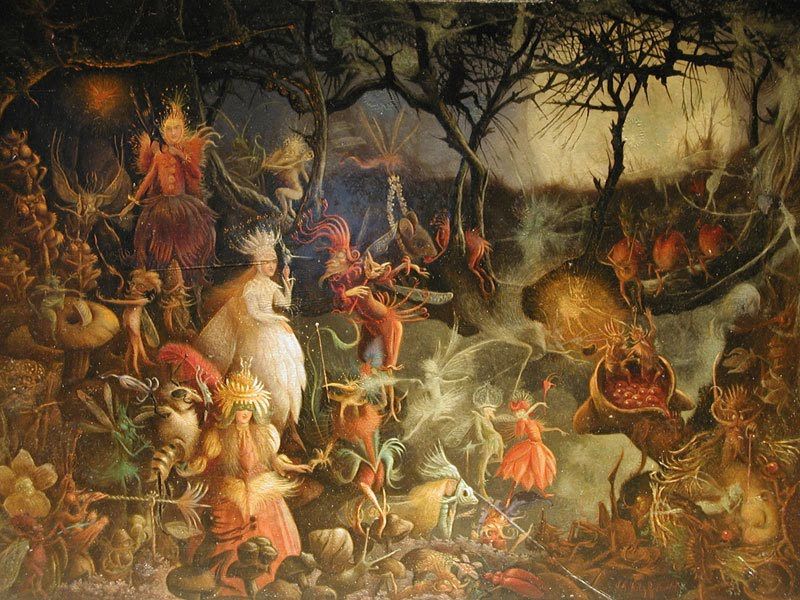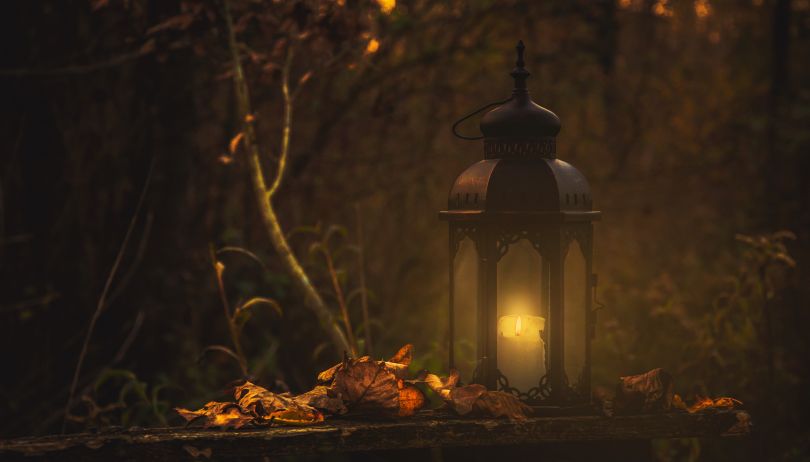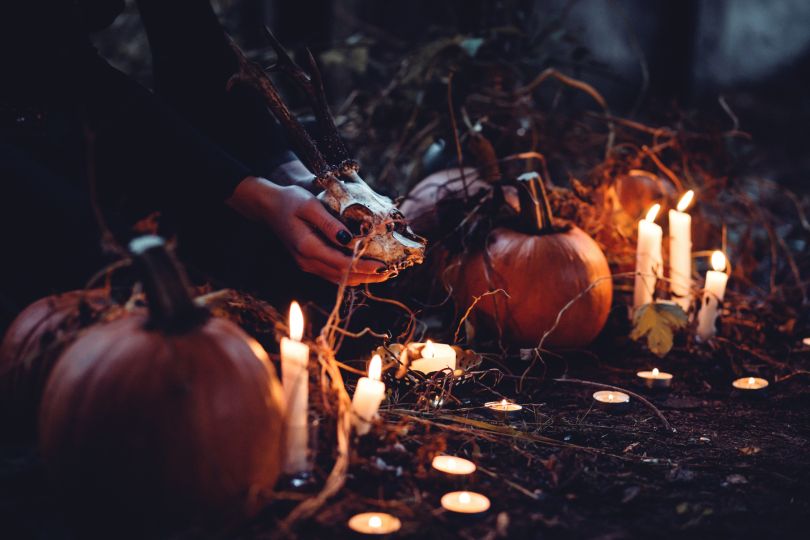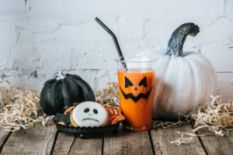On Samhain, all worlds are in balance and are equally opened to each other. It is one of the main holidays of the ancient Celts and marks the beginning of the "dark half of the year."
In Celtic tradition Samhain is the time when the grace-filled Summer Maiden leaves our world, going to stone for the whole winter, into the earth, and her place is taken by the Dark Old Woman, Kayleh, a blizzard weaver and mistress of cold winter winds. The horned God, to Samhain, becomes a Wild Hunter, a destroyer and a fierce pursuer, opening the gates, a hunter of fear and souls.
In the Wiccan tradition, where God is rather the embodiment of vegetation, he dies on this holiday, goes to another world to be resurrected on time. Samhain is a dark time, a time when the earth ceases to belong to a man, spirits and magical people become the owners of it for a quarter of a year.
During Samhain the spirits of the dead come to visit their living relatives. It is a time of fears when a variety of scary creatures comes to the earth - ghosts and stray trees and wandering lights, shadows and magical animals, eyeless and boneless creatures and Wild Hunt or Sluaish Hunt comes from the north or from the west. Samhain is the time of masks, that do not allow to make out who is in front of you - alive or dead, ordinary creature or magical one.
On this day the magic people went out into the world of people, and people, in turn, could get into the hills: according to legends, marriages between people and shea took place, the living returned the debts to the dead, and the dead alive, people and magical people traded with each other, the heroes fell into the hills or died, leaving forever on the Apple Islands, on Avallon.
Furthermore, it is often believed that at this time the power of the Good Court ends, and the time of the Court of the Unbecoming begins.
Influenced by the Christian religion, Samhain turned into a day of remembrance of the dead.
During Samhain the spirits of the dead come to visit their living relatives - for them they leave the doors open and light up the guiding lights on the windows and in front of the houses, cook special food.
Halloween is a much later tradition, already related to the Christian period, the name itself is a Scottish abbreviation for the English All-Hallows-Even (evening / eve of All Saints Day).
Halloween replaced Samhain by about a century by the eighth, while it is believed that from the very beginning the tradition of Christian and Gaelic was mixed in this celebration.
This is an evil night when spirits roamed the streets and villages. Lord Samhain, the lord of Darkness, would arrive in search of the spirits to take them to the underworld.
Halloween has become widely known only by the age of 19, when it became widely celebrated in the United States and Canada, and from there it spread to other countries, although outside those countries where Celtic descendants live, this holiday has more commercial than cultural or ritual character.
Christianity, which came to the land of the Celts, with paganism and magic, of course, did not get along. But, the customs of antiquity were completely impossible to eradicate. It remained to adapt the pagan holidays to the needs of the new religion, which happened over time. Little by little, Samhain became All Saints' Day, and the echo of venerating the spirits remained the eve of the holiday, known to everyone as Halloween. It is annually celebrated on the night of November 1st.
Under the influence of the Christian religion, Samhain turned into a day of remembrance of the dead, when the departed return to our world. For Christian priests, however, sidas and other magical creatures turned into evil spirits harming the living beings.
On the eve of All Saints' Day, people tried not to leave their homes, so as not to accidentally meet with ghosts walking freely on the ground. Moreover, at this time the Church demanded from people to complete abstinence and humility so that prayers could protect them from eternal evil.
However, it was not possible to completely destroy the rites of Samhain. Traditional leaping over the fire for purification from evil remained. Instead of skulls of defeated enemies, bags filled with straw were hung on the fences, with skulls painted on them, and hollowed out pumpkins with candles were installed on the windows.
The children, as during Samhain, went from house to house, sang ritual songs and begged for alms. Those who gave generously could count on a happy and rich year, while the stingy owners were threatened with loss of property.
Though not in its previous form, Samhain is celebrated in our days. The most surprising is that it continues to be celebrated not only in such traditionally “Celtic” countries as Ireland and Scotland, but also in very, it would seem, distant from the Celts, Ukraine.
“Magic is really very simple, all you've got to do is want something and then let yourself have it.”
Archive 2018-2021
Halloween through the Lens of Ancient Traditions
On the night of October 31st, the 1st we will meet Samhain, also known as Night of the Spirits, Night of the Dead and Night of the Gates and also Halloween. It is considered to be one of the most important Celtic threshold holidays, marking the end of the bright half of the year, summer, and the beginning of the dark, winters.









